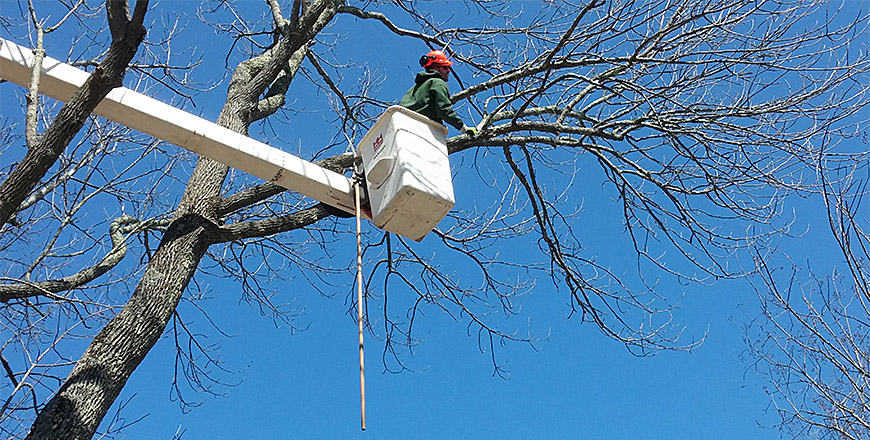
Tree pruning and trimming are common arboriculture practices and are often defined as the selective removal of plant or tree parts such as limbs, branches, to improve health, maintain vigor, reduce hazardous conditions and enhance appearance. Many terms are often used to describe specialized pruning performed by arborist including dead wooding, canopy elevation, crown lifting, vista pruning, crown reduction, crown thinning, rejuvenation, structural, A-shaping and many others. There are many reasons to engage a professional arborist to prune trees. Some of the most common reasons are for removing hazardous deadwood, dying limbs, removing storm damage, and to create clearance around buildings or utility lines.
The first step of the pruning process is to have one of our experienced arborists evaluate the trees in your landscape. During this visit our tree care professional may advise the owner on potential unforeseen issues to help protect trees, landscape plantings, and property. Of course the budget is considered when creating a management plan.
Arbor Specialties can help with just about any kind of pruning project you may have in mind. Our trained staff has experience in pruning, shrubs, shade, and ornamental trees. You may need help with repairing storm damaged trees, removing of hazardous deadwood, reshaping of tree canopies, elevating low limbs, clearing back from your roof or just need pruning to improve the overall appearance. With experienced climbers and aerial lift we can reach very tall trees efficiently and safely. Our procedures and equipment allows us to work minimizing damage to other plants, or trees. We always work to prevent damage to lawns, paved surfaces and other property surrounding your trees. The debris generated removed from the work site will be recycled locally at a recycling yard for reuse as mulch or other soil amendments.



